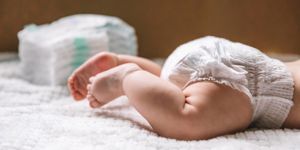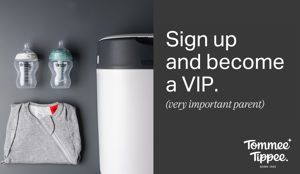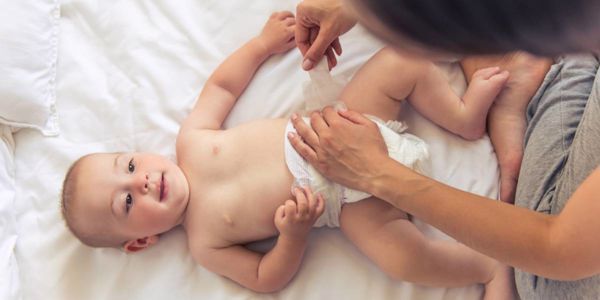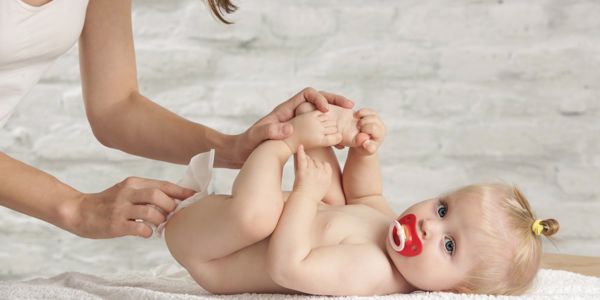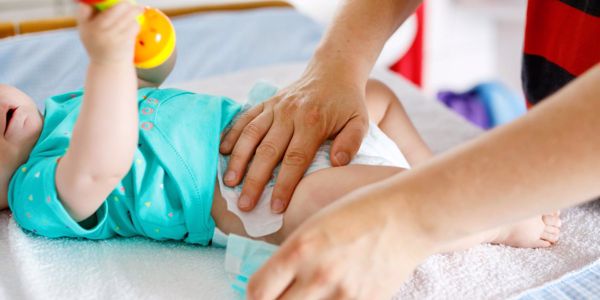Nappies are a staple for any baby whether they're newborn or leading up to potty training at about 2.5 years old. During this time, they will go through around 4000 nappies. Whilst we've come a long way since the terry-towels and safety pins of our childhoods, disposable nappies are in fact losing popularity and the cute covers, environmentally friendly reusable alternatives are becoming more widely used. They're now even being stocked in supermarkets.
With a growing focus on environmental concerns such as landfills and the production of single-use plastics, many parents are switching to reusable nappies, or at least looking at more eco-friendly options. Did you know it takes over 500 years for nappies to decompose? That's a lot of rotting poo polluting our air since they were first invented 70 years ago. Every nappy ever worn is still here and will be for another 400+ years - gross!
Reusable Nappies
A reusable nappy can be washed, either in the washing machine, boiled, or washed by hand. They can be bulkier than disposables, especially if you are using a high absorbency insert or liner, but a single, adjustable nappy can be used and reused right through to potty training and even passed on to relatives or friends who are expecting or saved for your next child. They wash up new and retain their monetary value so you can even list them for sale online.
When using disposable nappies, you’ll likely go through more than 30 nappies in the first week alone, with each one being wrapped in a nappy bag with wet wipes and sent off to the landfill where it will stay for the next 500 years. Can you imagine just how many you would go through in the first year?
Cost Comparison
The cost of reusable nappies can vary greatly. A single reusable can be anywhere between £5 and £40, which can be compared to buying single-use nappies at around £4-7 for 12 or more in a pack. In the first year alone, disposables can cost between £750 and £970 (depending on whether you go for own-brand or branded nappies). In contrast, reusable cloth nappies, inclusive of the cost of washing, can cost as little as £132 per year40.
Until they're potty trained, here's what they'd cost:
Disposables = £1.8k-2.4k
Reusables = £340
That’s huge savings, possibly even enough for the baby's first holiday!
You are also able to borrow reusables from local 'Nappy Libraries' for a small fee and return once your baby is potty trained - a great initiative to keep local landfill pollution down.
But of course, like with anything baby-related, everything is a personal choice, and many parents enjoy the convenience of disposable nappies, particularly if they don’t have easy access to a washing machine. There are therefore lots of options available, different sizes, different fits and absorbencies, styles, brands, and levels of decomposition. Brands are emerging more often that claim their nappies, (yes, including what your child leaves in them) are completely biodegradable and compostable, meaning you can still have the convenience of a disposable, with the bonus of reducing your carbon footprint.
Though none on the market are truly 100% compostable (usually only between 60-80%). To ensure they actually decompose, you can't send them off to landfills in your black bin or put them in a nappy bag. You'd have to take them to an industrial composting facility, or compost them in your own garden, as your usual brown compost bin will not accept nappies - even the biodegradable kind. Hopefully, a service to properly compost these nappies will emerge in the coming years. Until then, we can only buy them knowing they are using less single-use plastics, and thus better for the environment than non-eco-friendly brands.
Making the Switch
If you do want to make the switch to reusables, it’s worth noting that for the first 6 weeks, it's probably easier to get some eco-friendly disposables due to the sheer amount you’ll go through in the first few weeks, without putting a strain on your time to wash and dry enough for each nappy change multiple times a day.
The two most common types of reusable nappies are shaped/pocket nappies and all-in-ones. Shaped/pocket nappies have an outer waterproof cover (or ‘wrap’) with an insert/liner to absorb the wees and poos. The liners can either be washed or are made of biodegradable materials that can be disposed of. The outer cover comes in a huge variety of colours, designs and styles. Once you have one, you'll want loads more, simply because the designs are so cute. The advantage of these being, that they have lots of poppers on the outside that make it possible to use on babies from newborn until they're potty trained. The all-in-one is what it says on the tin - the cover and the insert are combined, which can make for a slimmer nappy and a quick nappy change. They will need separating however before they're washed.
Cleaning & Disposal
Once these nappies have been soiled, you have a couple of options for dealing with the pooey ones. If it’s solid enough and you can get it off the nappy, scoop it off with a tissue and flush the poo down the toilet. Or if just a wee or light soiling, you can chuck it straight into the washing machine. It's worth noting that breastfed babies’ poo is water-soluble (at least that is, until they're weaning), therefore will not need to be rinsed before they're washed. Simply dry pail them until you've collected enough for a wash.
Once they are on to solid foods, you might also want to use a pre-wash cycle to loosen anything that’s really dried in or scrape off any lumps beforehand. If you buy around 10-15 reusable nappies and liners, you can wait for a load of nappies to be ready to wash, rather than washing one at a time to save on energy costs.
If you do have separate liners, either dispose of them, or wash the liner. The outer cover won’t need washing unless it was a super explosive poo! It’s best to separate the liner from the cover before washing, and you can pre-soak if necessary.
It is recommended that you wash your nappies at 60-degrees but check the manufacturer’s guidelines carefully. You can dry your nappies outside or on an airer. Some can even be tumble dried.
Washing your reusable nappies make them more absorbent, so aim to wash them at least three times before you start using them. Don’t use fabric softener in the washing machine as this can affect the absorbency and can also irritate your baby’s skin.
Which Will You Choose?
Once your baby goes into childcare, or is looked after by family/friends, check they are set up for or familiar with reusable nappies. You may need to provide them with enough nappies to last a full day, plus some spares if they only offer disposables.
Reusable nappies are a cheaper long-term option than disposable nappies but do require an additional amount of commitment in terms of washing and drying.
Whilst they do reduce the amount of waste going to landfill, you do need to balance this off against the potential increase in energy used for washing (and possibly drying), but there'll still be a tremendous saving to be had.
Before you commit, make sure you do your research and find a solution that suits your needs. You are of course, also able to chop and change as and when convenient.

